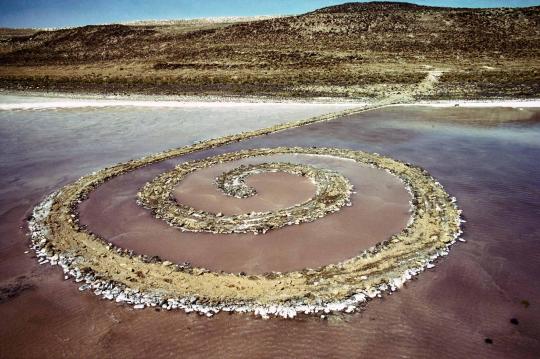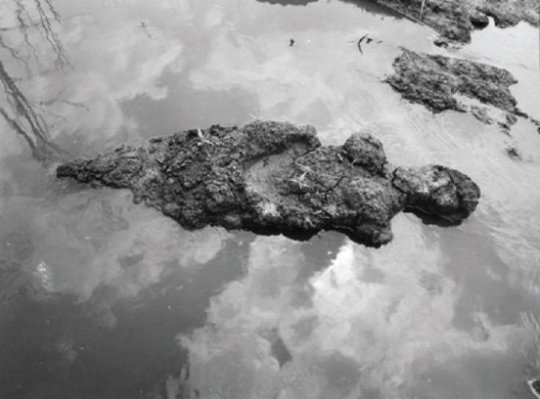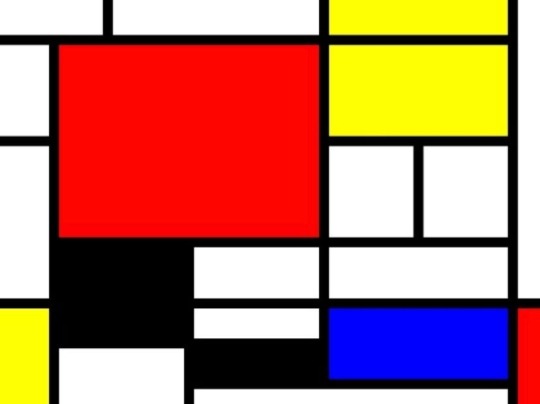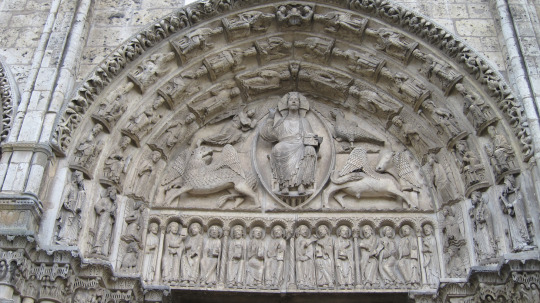Whatever I Want, Primarily Art History, I consume copious amounts of media
Don't wanna be here? Send us removal request.
Text
Really enjoyed this discussion around glyph-breaking/deciphering by Professor Francesco Perono Cacciafoco. Cacciafoco highlights both the art of glyph-breaking and the difficulties faced by those looking to pursue a career in an underappreciated field.
https://aeon.co/essays/what-it-takes-to-be-a-glyph-breaker-deciphering-ancient-language
0 notes
Text
Stephanie Valentin's series of color photograms, "Ether" (2006), explores insects; often overlooked, made unavoidable in their magnified and ethereal presentation. Through her use of scale, the insects become human-sized and thus otherworldly even anthropomorphic.






3 notes
·
View notes
Text
Je Me Gratte/Self Scratch by Chenghua Yang
As a Psyche/Aeon enjoyer, I recently clicked on an email showcasing a new article to begin reading. Instead of clicking on said article as intended I became intrigued by a second linked media piece which read "Fixating on her body, a woman grapples with strange distortions of the self." Such a hook of a title is displayed below an image of Yang's animation which immediately stole my interest. Yang depicts a woman grappling with their relationship with their own body, facing an ouroboros of destruction and repair. A great piece on the artist Yang's own experience with mental illness, the animation in addition easily speaks to others who have undergone similar experiences. Slight NSFW warning for the end of the animation, however, this touching of one's body symbolizes the artist's hope of reconnecting with her body as opposed to anything inherently sexual.
vimeo
2 notes
·
View notes
Text
A Bit Out of the Ordinary
Tonight as I lay in bed I read Charli Oakeby's dissertation for her bachelor's in English, and I found it a great example of the overlapping of disciplines. Oakeby's analysis of Lana Del Rey's discography is inherently intertwined with art analysis as she analyses Del Ray's work. Around a 50-page read, I greatly enjoyed Oakeby's interrogation of Goethe's 'eternal feminine' through four principal archetypes.
#art history#art#history#english#literature#lana del rey#lana del ray aesthetic#goethe#thesis#academic article
3 notes
·
View notes
Text

Armando Reverón, pictured above, is a Venezuelan painter (1889-1954) well-known for his impressionistic landscapes and nude paintings. He attended the Academy of Fine Arts in Caracas and later earned the opportunity to study in Barcelona and Madrid. Before traveling back to Venezuela he spent time in France and general time spent in Europe, where he developed a Post Impressionist style. He moved to Macuto Beach where he built several huts that functioned as his workshops.
"Voices and Demons" or Juan Calzadilla's Voces y Demonios de Armando Reverón: Cuentos, Ancedotas, Pensamientos (Caracas: Alfadil, 1990), is a series of statements from Reverón as recorded by Calzadilla. These statements capture Reverón's approach and passions in addition to his declining mental state:



4 notes
·
View notes
Text
Sorry guys I’m not as well written because I’m currently high, but isn’t it crazy that Jackson Pollocks drip paintings include an abundance of fractals, so basically Pollock subconsciously used scientific principles to create his art, making his paintings practically as unique as a fingerprint. And then bro was like used by the US as the figurehead for American propaganda during the Cold War. Crazy stuff, I’m reading “Artcurious” by Jennifer Dasal and it’s going hard af.
#art#art history#history#reading#abstract#abstract expressionism#jackson pollock#girls who smoke weed
3 notes
·
View notes
Text
Higham, John. "Indian Princess and Roman Goddess: The First Female Symbols of America." Proceedings of the American Antiquarian Society, vol. 100, no. 1 (1990): 45-79.
Disclaimer: This article has repeated use of the "Indian" to refer to Native Americans and was written in 1990, so the language is dated.
A really good article on the progression of American symbols of unity and how said symbols exploit stereotypes, particularly that of the "Native Princess."
My Notes:
Iconography utilized for a depiction of America as an indigenous woman included; partial or full nudity, "exotic" animals such as an alligator, indigenous dress but European features and complexion.
The indigenous woman was used to symbolize America because Europeans and the American colonists alike deemed America barbaric, or "savage."
Colonial leaders quickly began to reject the symbol of the indigenous woman for the very fact that they did not want to be associated with indigenous peoples.
The "Native Princess" symbol was overtaken by the depiction of America as a Roman goddess, Liberty. Liberty was depicted with the new flag, eagles, and Roman iconography such as the pileus on a staff.
In the 19th century the "Native Princess" arose back into popularity as literature began to glamorize a "dying race" with individuals such as Pocahontas. Native Americans became a symbol of rootedness and continuity.
2 notes
·
View notes
Text
Environmental Art
Roughly Ranges from 1965-Present
Environmental or Land Art rose from a desire to reconnect to the land and move art outside of the gallery.

-Smithson, Spiral Jetty (1970).
The Spiral Jetty on the Great Salt Lake in Utah made by Robert Smithson is 1500 feet long and meant to be walked on. It provides an introspective exercise for those who interact and reconnects them with the environment.

-Heizer, Double Negative (1970)
Michael Heizer cut two trenches into the Norman Mesa in Nevada stretching over 1500 feet long. With machinery, Heizer cut gashes into the mesa to heighten its contours.
--Art such as this critiques the art world. It cannot fit in a museum or gallery, you cannot buy or sell it and it is not reserved for the elite. Art such as this conveys a phenomenological experience and integrates humanity with nature.

-Mendieta, Silueta Series (1973-79)
Ana Mendieta created her Silueta Series to display a different kind of environmental art in which rather than taking away from nature she adds herself to it. Mendieta collaborates with nature by inserting her body into the earth reconnecting with nature. Her process is much more personal as opposed to the prior two artists.

-Goldsworthy, Slate Arch (1982)
Andy Goldsworthy is a well-known environmental artist who often uses more ephemeral mediums for his creations. His art is made from found environmental objects such as ice, snow, rocks, or leaves. Nature provides the materials that he uses.
#art#art history#environment#enviroment art#environmetalists#andy goldsworthy#ana mendieta#michael heizer#robert smithson
31 notes
·
View notes
Text
Piet Mondrian


Piet Mondrian wrote of his goals and ideas in “A Dialogue of Neo-Plasticism” in which he poses a conversation between a singer and Mondrian, to better convey his ideas.
1 note
·
View note
Text

I’ve been gone for a bit, college started back up again, but here is an art piece I recently created. I have yet to decide on a title, but it is acrylic paint 18x24in on canvas. I’ve been very into the post-impressionists, particularly Van Gogh, so I imitated this style in my own art. This is a recreation of a landscape/oceanscape? from Vancouver Island in British Columbia.
25 notes
·
View notes
Text
Monolithic High Crosses

A monolith is a column or monument made from one large block of stone. Many were made throughout the 8th-12th century and were often if not always associated with monasteries. They often acted as markers for a boundary or consecrated spots. Around 800AD, the high crosses depicted narrative scenes that were purposefully meant to be interpreted. Many interpretation of crosses such as this include the passion of Christ, gods' provisions, or the ideas of salvation and redemption.
5 notes
·
View notes
Text
Medieval Art in the West 1st-9thce
During this time, artwork took major inspiration from pagan motifs. Animals were often seen in art, such as the eagle or snake. Mythical beasts were often heraldic figures and many pieces were polychromatic.

These Eagle fibulae (safety pins), were made in 6thc Spain and are great examples of this art period.

The Golden Buckle from Sutton Hoo in England shows us zoomorphic interlacing. The Jutes, Angles, and Saxons replaced the Celts and Rome and took prominence in the creation of luxury goods. This buckle was made from a pound of gold and shows the advanced metalworking used by these groups. Manuscripts also rose in popularity, primarily created for didactic reasons. A lot were made exclusively for god and were not meant to be read. They were used as visual place markers, as the bible is unlabeled and difficult to digest. They were also used as tools by missionaries. Many were thought to be apotropaic or have some sort of protective function, even being capable of performing miracles.

The Book of Durrow, depicted above was created in 680c and is the earliest Irish gospel with illuminations (imagery). It was created by the scribe Columba and this specific page depicts Man, the symbol of St. Matthew. The illuminations remain flat in an intentional manner.
9 notes
·
View notes
Text
Sainte-Chappelle, France 1243-48

Saint Chappelle was created as a private palace chapel, paid for by a king and meant for a king. The church functions as a monumental reliquary. It houses the crown of thorns and other objects related to Jesus. The outside architecture follows gothic standards, but the inside is the most spectacular part.

On the multitude of stained glass, 650 scenes of battle are depicted and the rest depict nearly all the books of the bible. The rose window specifically depicts the last judgement. Through this display of grandeur the French kings were seen as being inheritors of the biblical kings. Sermons and liturgy were specifically written for the church. They exhorted the king, comparing him to the biblical successors.
2 notes
·
View notes
Text
Chartres Cathedral, France 1134-55
Chartres follows the iconic basillica style church plan and was created as a pilgrimage church. As mentioned in another post, Mary's tunic, that she was thought to have worn while giving birth to Christ, resides here. The church experienced a fire and had to be rebuilt around 1194.

Notable to Chartres are its portal tympanums on the west façade. The first of the three, depicts zodiacs and the labors of the months. It tells the story of Christ before time began.

The second of the portals shows the annunciation, visitation and nativity, and the throne of wisdom flocked by two angels. This tympanum deals with the birth of Christ and his entering into human time.

And finally, the last portal tympanum personifies the liberal arts and the Christ Pantocrator within his mandorla surrounded by the gospel writers depicted in their iconographical forms. It discusses Christs return to Earth and the final judgement.

The Jamb features on the church are quite unique, as the west façade jambs are early gothic saints. The south portal however is in high gothic style. This resulted in quite a difference in the appearance of the jambs.

These jambs are on the west façade and have distinctly elongated figures with an emphasis on upward motion. The persons depicted are thought to be Queen Sheba, King Solomon, and a priest. The figures are very much a part of the column, in very stiff posture and isolated from one another.

On the other hand, the south portal figures are shown with movement and look like sculptures, not simply parts of a column. Their bodies are more naturalistic and the figures represent various significant old testament biblical figures.
1 note
·
View note
Text
Gothic: 1136-1500
Georgio Vasari dubbed the name "Gothic" for this art period. He believed this new style to be vulgar and barbaric. Gothic art was a continuation of the Romanesque style, and came about during the rise of urban communities and power of bishops. Liturgical objects became significantly adorned, such as a chalice or paten. The architecture was focues on being lighter and thinner as compared to Carolingian but still similar. There were lots of windows, and stained glass was introduced. The function of stained glass was to let in divine light and typically tell biblical stories. The choir was sure to hold attention by how the architecture placed it. The Gothic rule of thumb was 4 buttresses, 3 portals, 2 towers, and one rose window.


Chartres Cathedral is a great example of Gothic architecture. Located in France and built originally in 1134-55, the church was meant as a pilgrimage site, and was dedicated to Mary, as it held the tunic she wore while giving birth to Christ.
0 notes
Text

Hagia Sophia: The Great Church, Constantinople (532-537)
The Hagia Sophia is dedicated to an idea or attribute of God. Holy wisdom is said to have presided over the patriarch of Constantinople who at the time of the buildings creation was Justinian. The Hagia Sophia encapsulates Byzantine ideology with repeating geometric patterns, a central, symmetrical plan, and three levels of height. The three levels consist of the upper, representing heaven, middle, the realm of biblical stories, and lower representing Earth. Senses played a large role in the experience of seeing artwork within the church, so the choir often added to the overall experience.

3 notes
·
View notes
Text
Early Medieval Art in the West
Terms of Note:
Zoomorphic: incorporates animal forms.
Insular Manuscripts: Manuscripts of the island.
Codex: A manuscript text in book form, with folded pages that you flip.
Recto: right-hand page of a 2 page spread.
Verso: left-hand page of a 2 page spread.
Illuminations: Painted letters, scenes, ornamentation- didn't always illustrate/reflect the text.
Miniatures: Little scenes (not full page, but smaller and inset into text).
Marginalia: Anything in the margins.
Incipit Page: first page of text.
Text Page: Page with text.
Carpet Page: Page of non-narrative, mainly geometric ornamentation, sometimes incorporating animal forms. Typically found at the beginning of the four gospels in insular manuscripts.
Interlacing: Interweaving of decoration.
Initials (elaborate): First letter of text, illuminated (highly decorated).
Terminal: Decoration on the ends of the initials- usually zoomorphic or grotesque.
Monolith: Column or monument made from one large block of stone.
6 notes
·
View notes